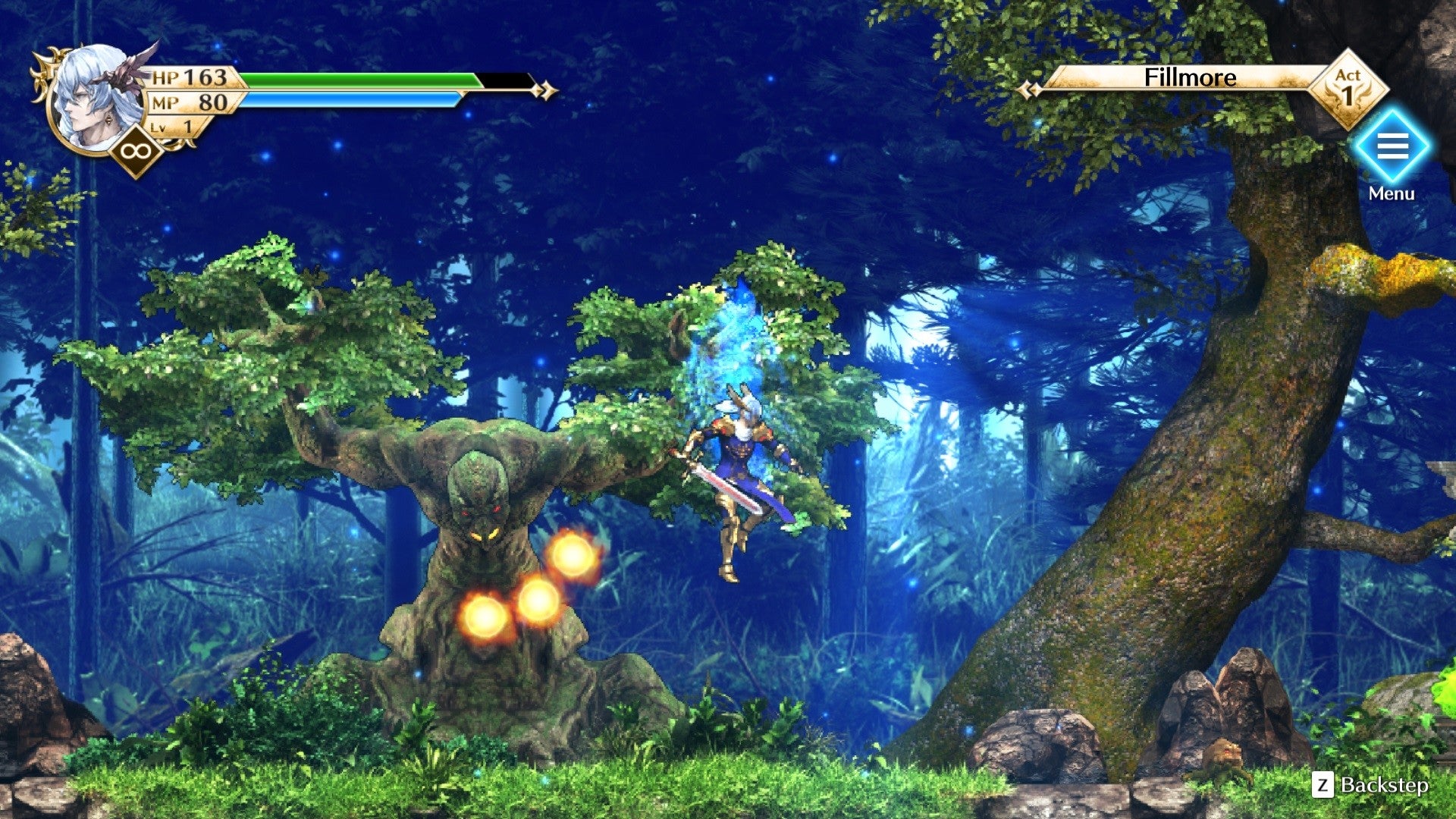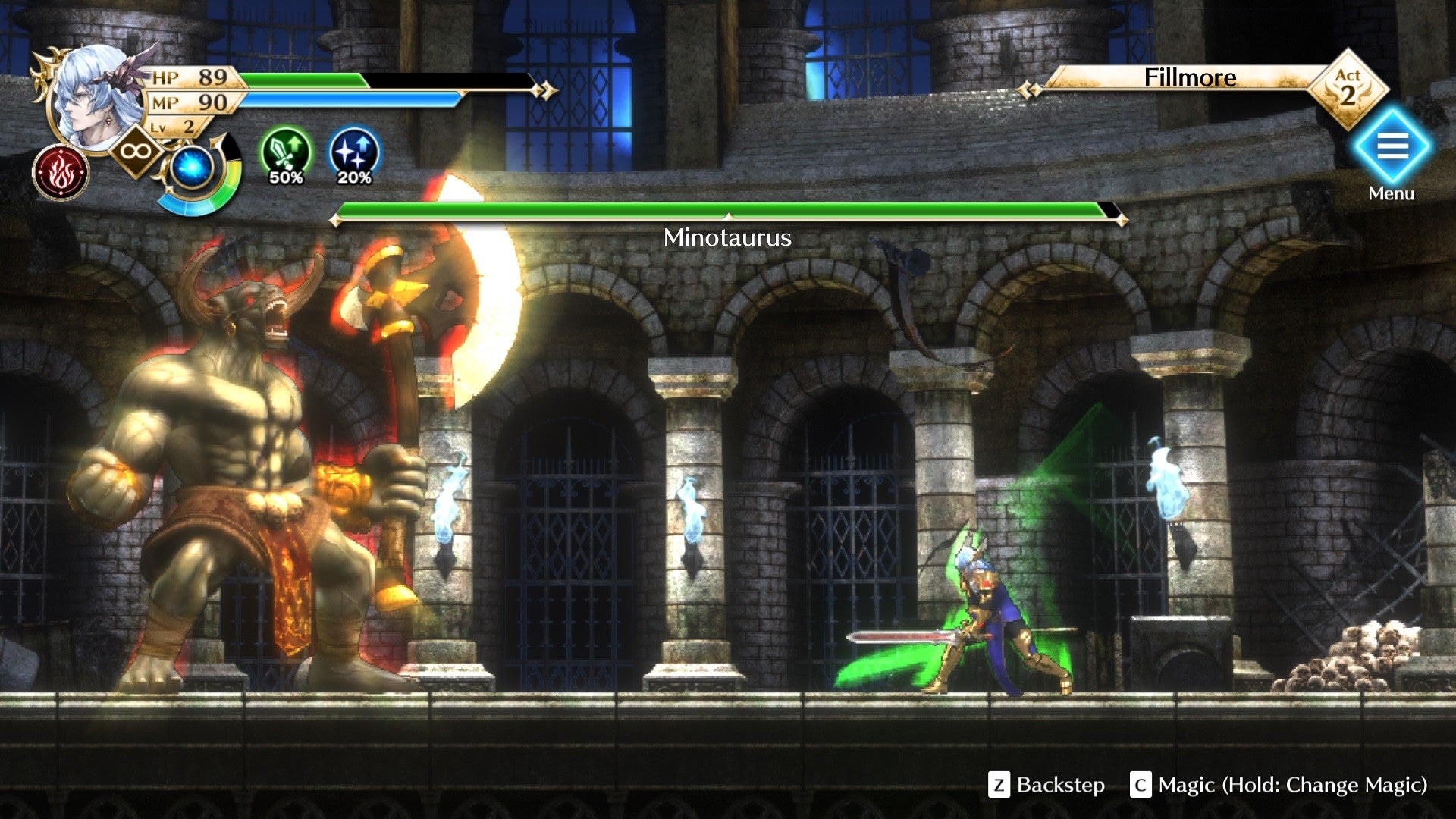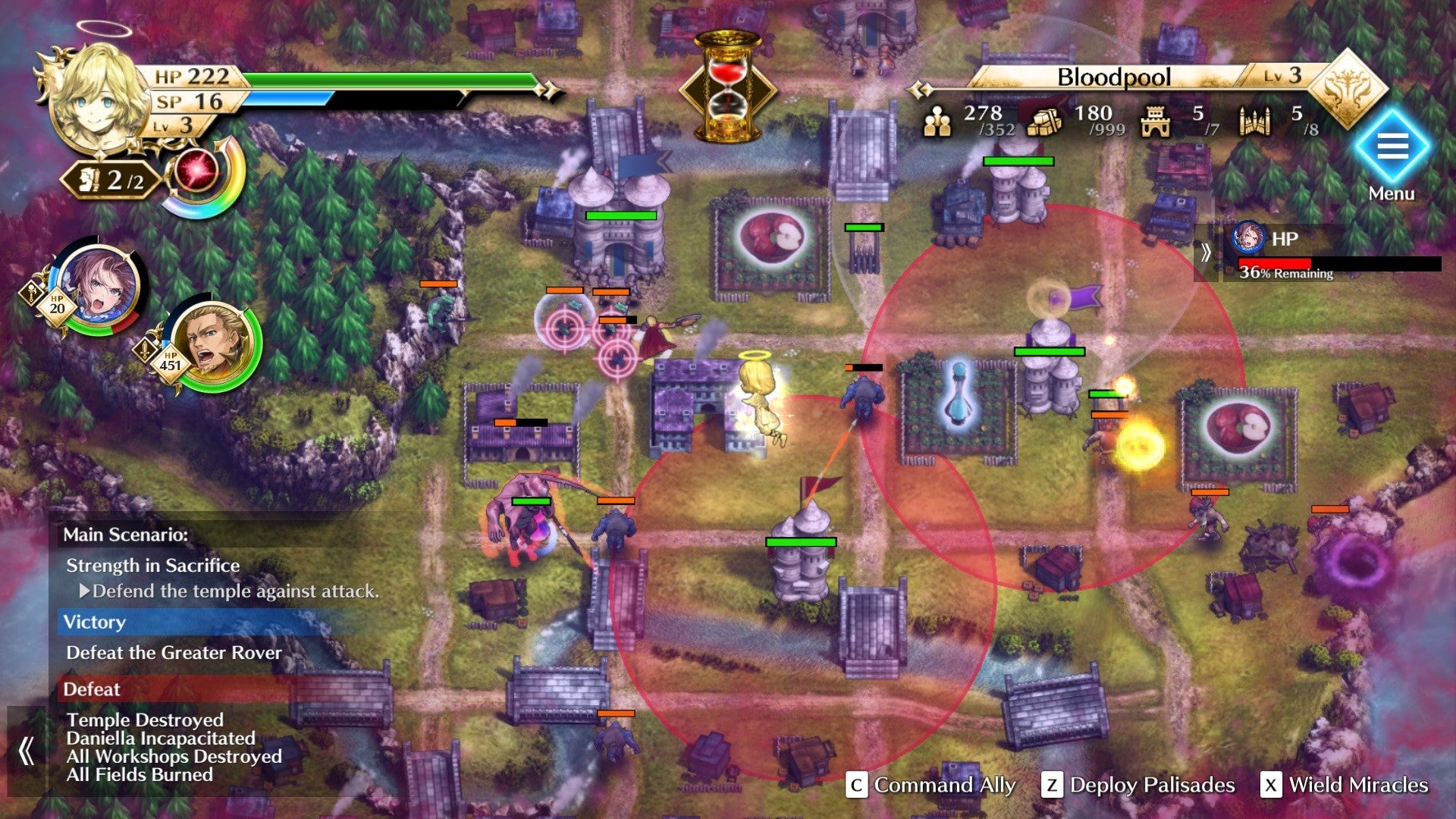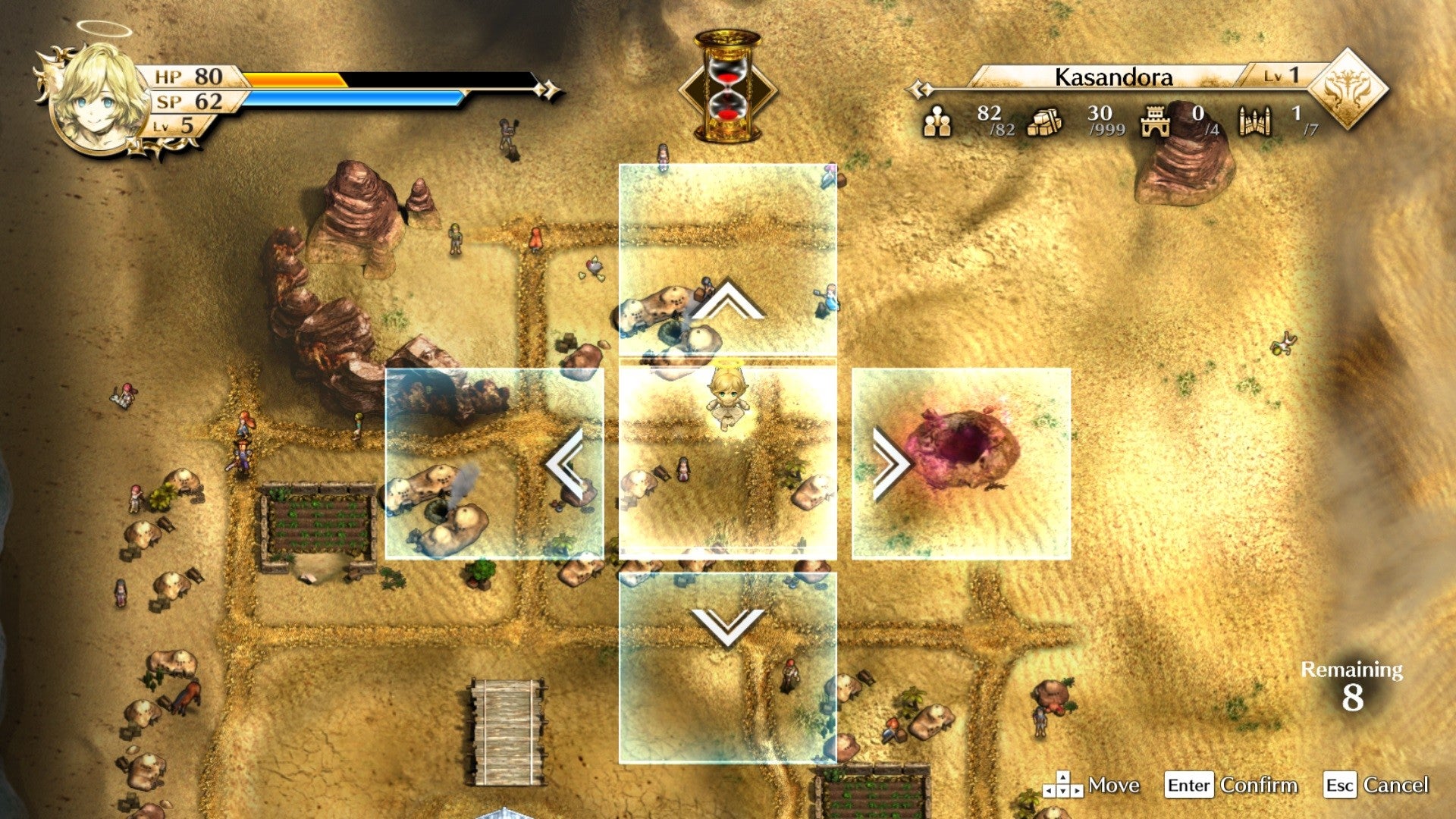
[ad_1]
1990’s ActRaiser is special. Most video games released in the late ’80s tasked you with saving a princess from a dragon. ActRaiser says, “Hey, would you mind playing God with the people living on the demon-scarred land you just liberated? They’re really squishy and helpless. Thanks, you’re a peach.”
The game’s developer, Quintet, was pretty special, too. Once a branch of Enix before the latter joined with Squaresoft in 2003, Quintet was behind a lot of SNES-era RPGs that are still fondly remembered today, such Illusion of Gaia and Terranigma. They’re all solid adventures that share a canon, albeit vaguely, and tackle some pretty heavy subject matter, including colonialism, poverty, and the slave trade. Alas, Quintet disbanded when Square Enix was born, and most of its team scattered to the winds. There’s been a Q-shaped hole in my heart ever since, so I hope I can be excused for yelling like a madwoman when ActRaiser Renaissance made a surprise debut at the September 2021 Nintendo Direct presentation.
My elation quickly gave way to hesitation. Online markets are swarming with medicore “upgrades” of classic games. ActRaiser Renaissance likewise struck me as a cynical 2.5D reskin of Quintet’s unique action game/town builder. I picked up the game in spite of my fears, and felt relief as they dissipated one by one. ActRaiser Renaissance knows what its source material is all about – namely, satisfying action sequences, enjoyable town interactions, and sequence breaking like a drunk time traveller.
You play through ActRaiser Renaissance as “The Master,” i.e. God. You awaken from a deep, healing sleep to discover the demon who put you in the ground, Tanzra, has been throwing a millenia-long house party for his monster homies. You must rise up again, adopt a warrior avatar, and beat Tanzra over the head. But first, you must regain your lost power – and nothing boosts a god like a hearty bowl of faith soup.

By clearing the land of monsters and watching over the humans’ fledging settlements, you can reap their faith like a divine tapeworm. The first step of town-building in ActRaiser Renaissance involves completing an action-platforming stage, which includes fighting a boss at the end of it. Then the Master beams a proverbial Adam and Eve down to the freed land, where they toil, build, and multiply. Thus goeth the building/sim portion of the game.
ActRaiser Renaissance’s town-building sequences take place from a top-down perspective. The segments are overseen by your cherubic angel servant, who has a real mouth on him. The angel directs the townspeople on how they should build their roads, which in turn encourages them to farm crops, assemble houses, and build factories. Careful cultivation of your towns means a higher population, and that means more faith for you to bulk up on like a winged Popeye on a holy spinach binge. You can’t get too comfortable on your cloud, however. One town won’t generate nearly enough faith for you to gobble down. You need to travel to other monster-infested lands and clear them out through additional platforming sequences.
The side-scrolling action in ActRaiser Renaissance might feel heavy and awkward to someone raised on the elegance of Hollow Knight or Celeste. But if you grew up playing 16-bit platformers, ActRaiser Renaissance feels like coming home. The Master has a clumsy heft that’s slightly maddening, which is exactly how my old bones like it.

That said, it’s easy to appreciate the modifications developers Sonic Powered and Square Enix made to the Master’s moveset. The new upward and downward slash moves are welcome additions, as is the Master’s ability to backslide away from danger. The action stages in ActRaiser Renaissance are moderately difficult (hint: the original SNES localization bumped down the difficulty, which is what you’ll experience if you set ActRaiser Renaissance on “Easy”), and they’re larger than the original game’s levels. Each level also holds collectables that can power you up permanently, so if you need a boost against a tough boss, all you need to do is delve a little deeper into the crevices before you.
ActRaiser’s build-fight-build cycle was satisfying in 1990, and it holds up in ActRaiser Renaissance. In particular, Sonic Powered have added an admirable amount of content to the town building sections, which now require you to defend them in scheduled tower defence sequences. This is where ActRaiser Renaissance splits me. Just hearing “tower defence” makes me groan, and my heart fell when I realized I’d be building towers and gates to strike down the rabble that oozes over the game’s townships. But I grew more fond of these interludes as I collected more Heroes – story-centric warriors anchored to each town – and gained the ability to whisk them into other towns’ skirmishes. (What did the indigenous warrior ghost Migrana think when I teleported her from her frigid homeland to fight in the blazing dunes of Kassandora? I don’t know! Sounds like a whole lot of Not My Problem!)

ActRaiser Renaissance’s graphics admittedly make the game seem rough around the edges. It doesn’t look bad, but the boss sprites in particular lack the imposing size and weight of the original SNES roster. It’s very easy to judge ActRaiser Renaissance on a handful of screenshots, but there are also charming visual details that shouldn’t be overlooked. The townspeople are endlessly busy in the sim areas, and you can watch them as they cut wood, do laundry, till fields, and pet dogs. A righteous people indeed.
Tower defense controversy aside, Sonic Powered have successfully captured the satisfaction of “cultivating” your own strength through your people. And when their population plateaus, it’s time to blast their fields and houses so they build bigger, better fields and houses, and elevate your own level cap accordingly. As someone who grew up only knowing the God of the Old Testament, I can appreciate what the Master is all about.

Most importantly, ActRaiser Renaissance doesn’t limit you to siphoning one town at a time. As long as your levels are satisfactory, you can tell one town to take a hike while you bounce off to find the next Promised Land. Then you can return to address your first flock’s problems whenever you like. In fact, this “town surfing” becomes necessary later in the adventure. One town may find itself stricken by a plague that can only be cured by herbs in a faraway tropical settlement. You’re always being encouraged to fight and move and build, and it all melds into a nice gameplay loop.
When Quintet disbanded, many of its developers unfortunately faded from the industry. ActRaiser Renaissance is therefore the work of a whole new staff (barring legendary composer Yuzo Koshiro, who returned to revise his epic soundtrack while adding a slew of new tunes). It’s always worrying to see a beloved property fall into the hands of a new team, but Sonic Powered have done right by ActRaiser. And that’s important, because Quintet’s catalogue deserves to be remembered and revisited. With any luck, ActRaiser Renaissance might herald yet another renaissance for the likes of Illusion of Gaia and Terranigma.
[ad_2]





